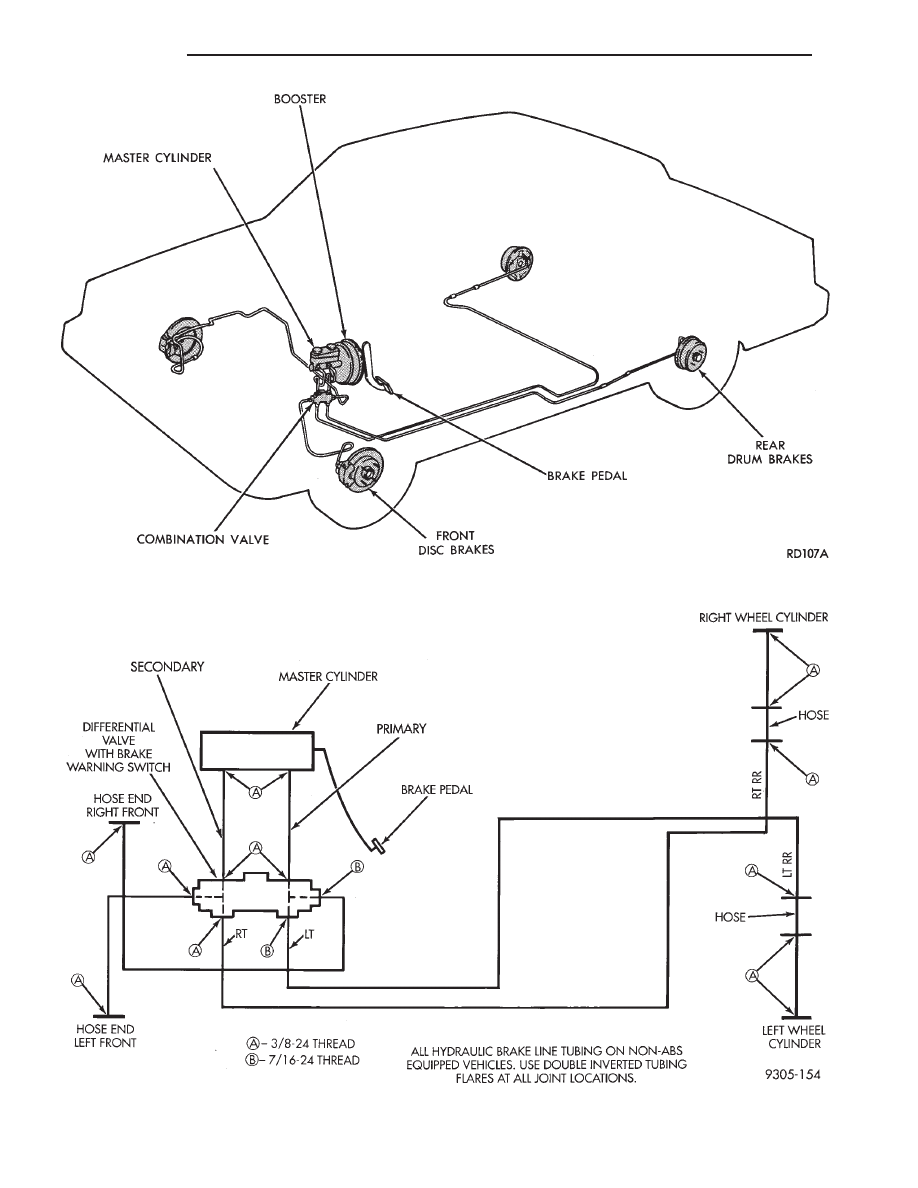Chrysler Le Baron, Dodge Dynasty, Plymouth Acclaim. Manual - part 212

Fig. 1 Diagonally Split Braking System (Typical Non-ABS System)
Fig. 2 Proper Nut Thread Size And Tube Routing (Non-ABS Equipped)
5 - 2
BRAKES
Ä
|
|
|

Fig. 1 Diagonally Split Braking System (Typical Non-ABS System) Fig. 2 Proper Nut Thread Size And Tube Routing (Non-ABS Equipped) 5 - 2 BRAKES Ä |